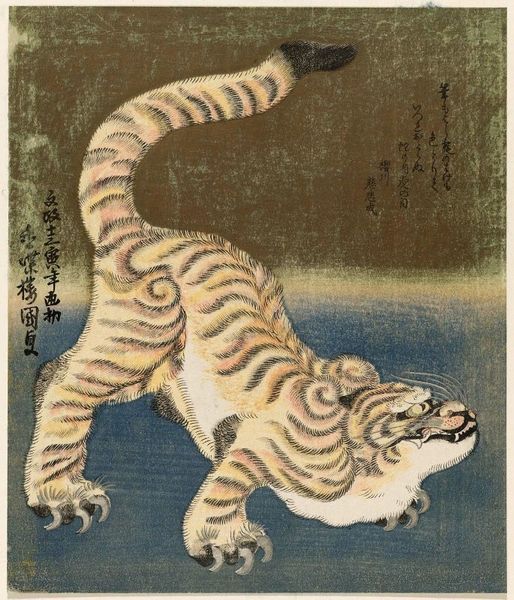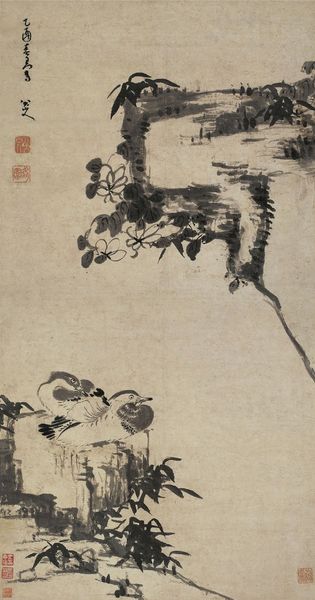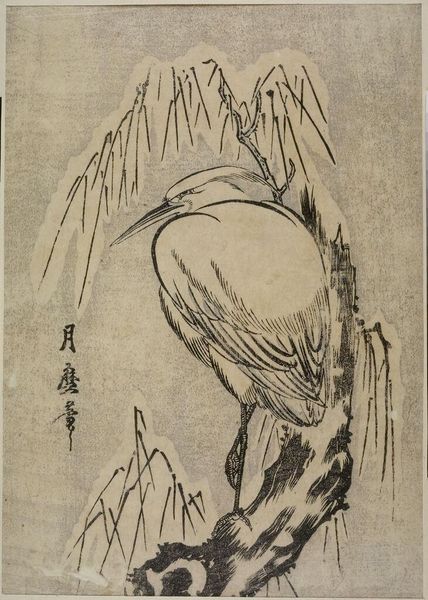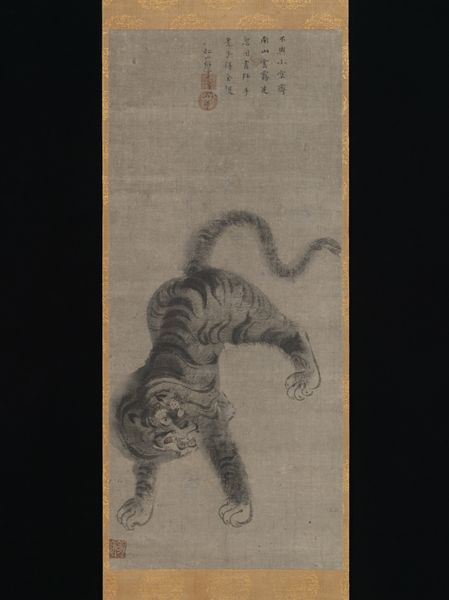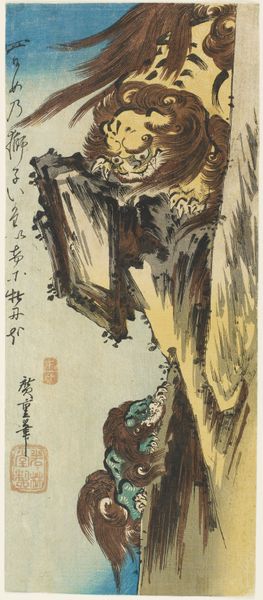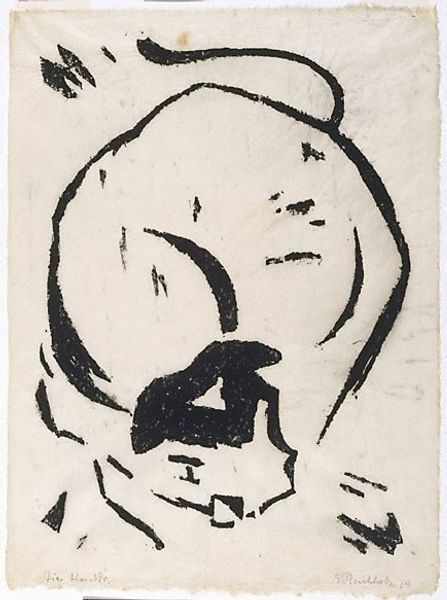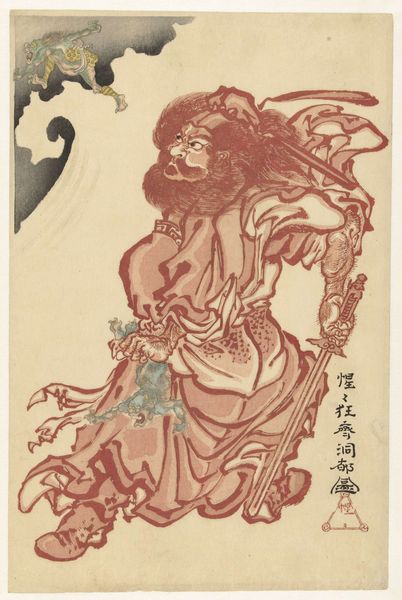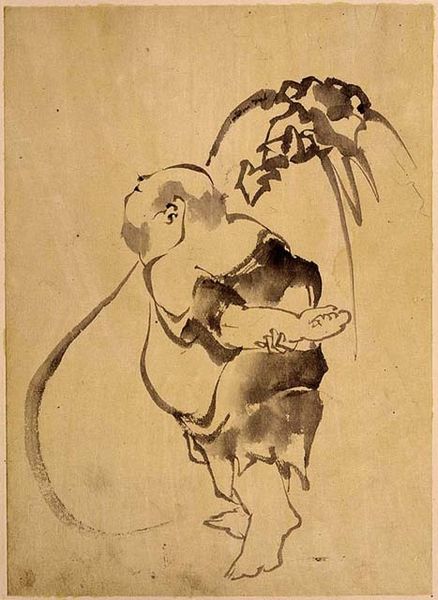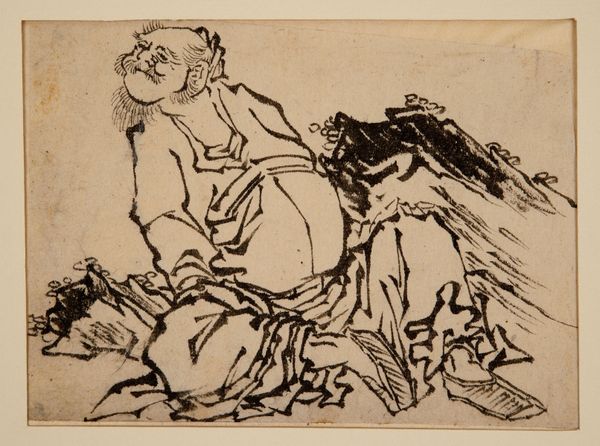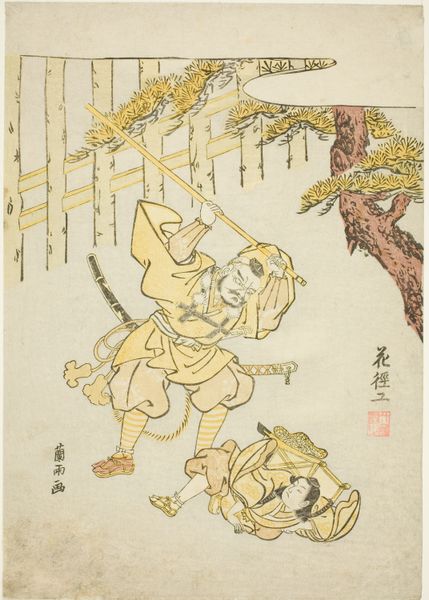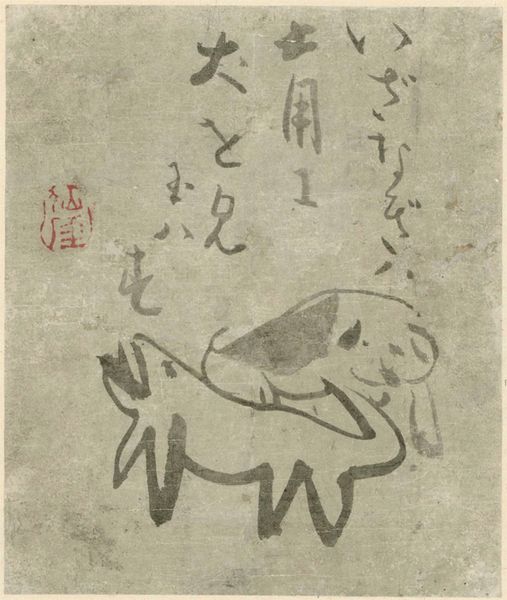
painting, ink
#
portrait
#
animal
#
painting
#
asian-art
#
oil painting
#
ink
#
watercolor
#
realism
Dimensions: height 105.5 cm, width 51.5 cm, width 670 mm, diameter 48 mm, height 7.5 cm, width 70.5 cm, depth 8 cm
Copyright: Rijks Museum: Open Domain
Curator: Let's discuss "Tiger Seen from the Rear," an ink and watercolor piece dating back to around 1700, created by Gao Qipei. Editor: It strikes me as surprisingly vulnerable. The composition focuses so intently on the tiger’s back, a position suggesting retreat, or perhaps deep contemplation. It really subverts the power we usually associate with this animal. Curator: That subversion is really key. Representations of tigers in Chinese art are typically symbolic of power and imperial authority, and served as emblems of military prowess. By choosing this atypical angle, Gao is consciously playing with, perhaps even questioning, those traditional associations. The social and political contexts of the Qing Dynasty where he lived is very significant. Editor: Absolutely. This work offers an invitation to reconsider power dynamics, both personal and societal. I think of how the 'tiger mom' stereotype continues to cast Asian women. Could this work offer commentary on that, even in its time? Was Gao perhaps commenting on the performative aspect of power within court circles? Curator: Intriguing points! It's worth considering how literati painting often served as a form of coded expression, particularly under the Qing dynasty's political constraints. Artists like Gao utilized subtle visual cues to convey sentiments that couldn’t be openly expressed. The artist's hand using his fingernails rather than the traditional brush may also show an avant-garde expression. Editor: The way the tail almost merges with the rocky terrain adds another layer of meaning. It seems the tiger is attempting to dissolve back into nature. Perhaps this indicates that raw power is meant to eventually return back to the earth and to nothingness. Curator: That idea of dissolving holds significant cultural weight. There's a Taoist influence at play here, emphasizing harmony with nature rather than dominion over it. The white space too is critical, adding to that visual symbolism that suggests reflection or meditation rather than aggression. Editor: The deliberate use of negative space allows for such a variety of readings. Seeing it today prompts important discussions about the illusion of control and the cyclical nature of dominance. Curator: Absolutely, analyzing the painting with awareness of cultural contexts lets the viewing experience connect both our past and the present in surprising ways. Editor: This perspective invites me to reconsider my own preconceptions, viewing power with a more nuanced, critical lens.
Comments
No comments
Be the first to comment and join the conversation on the ultimate creative platform.
